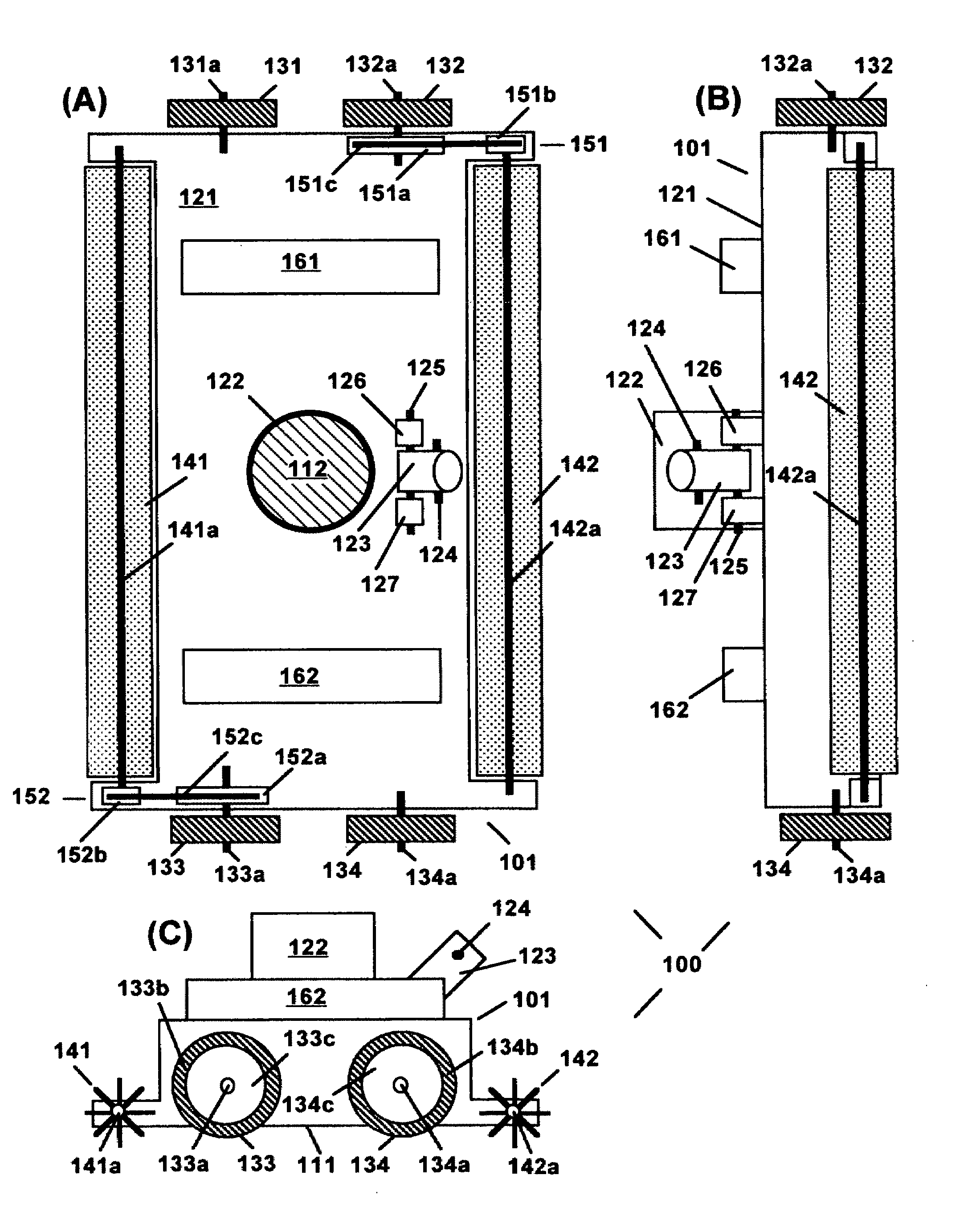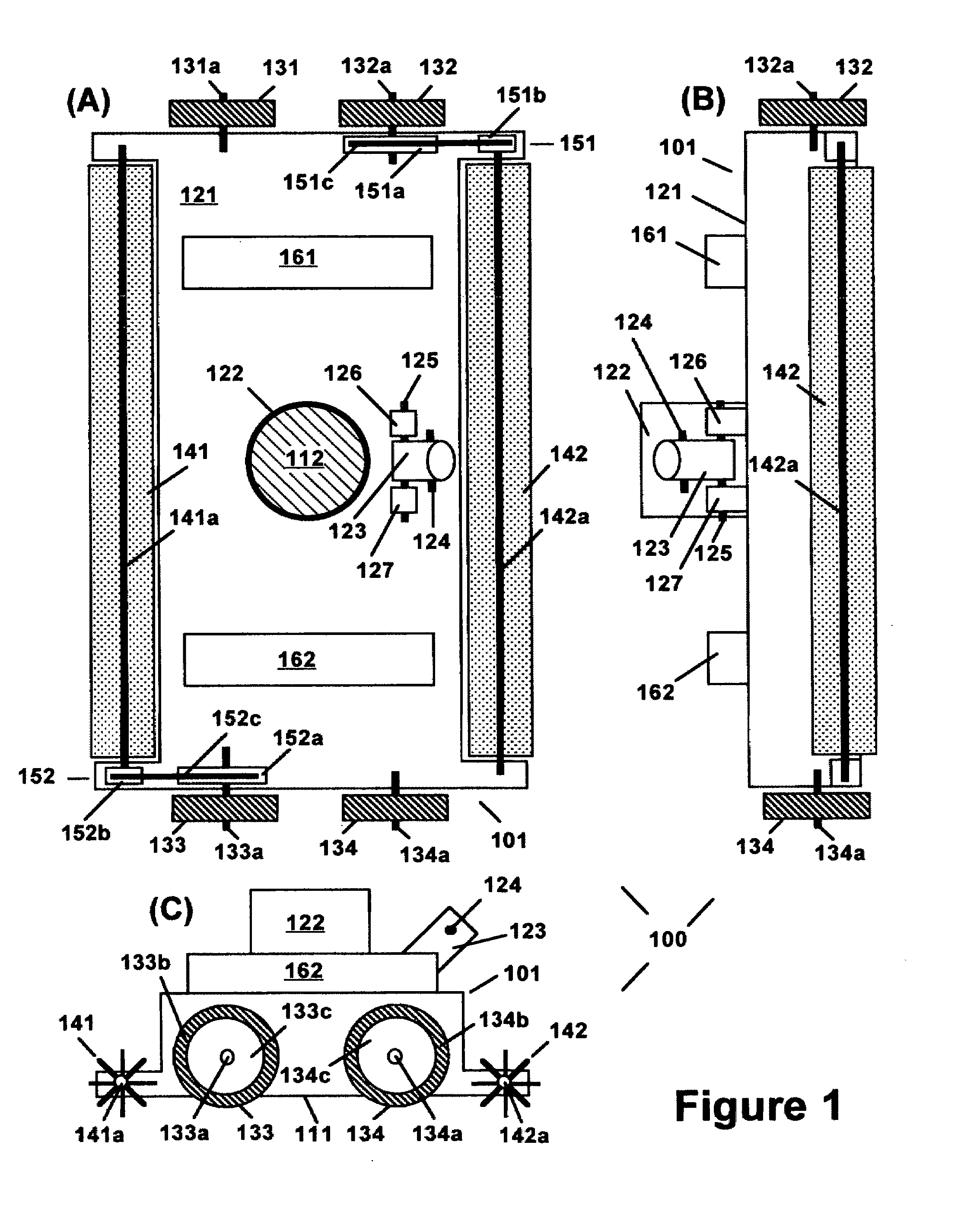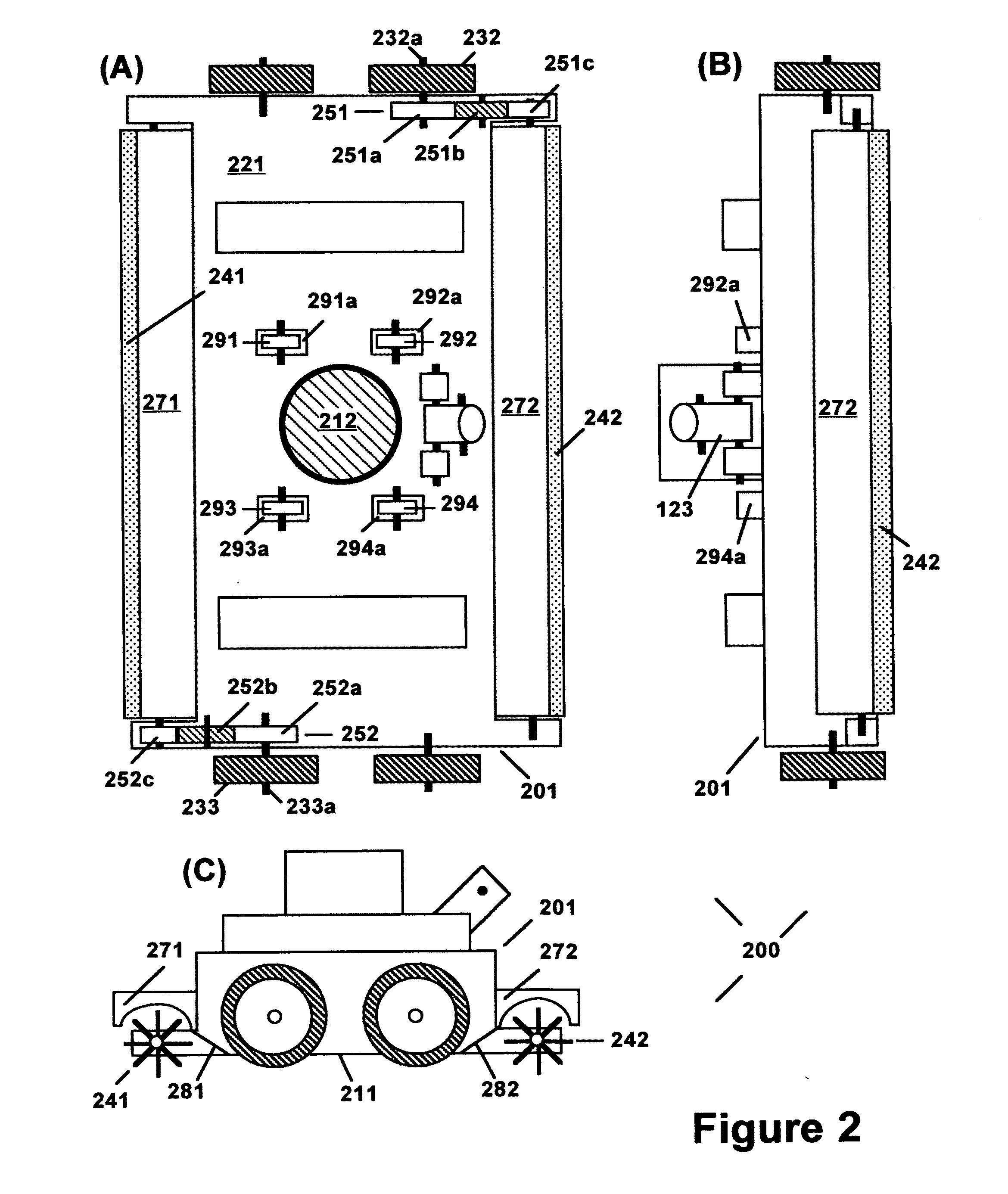Swimming pool cleaning device
a cleaning device and swimming pool technology, applied in the field of swimming pools, can solve the problems of ineffective prior art devices for removing debris bits, difficult to capture tree leaves, and inability to capture debris larger than the bottom gap of the device, so as to enhance the capture of debris, minimize the possibility of debris catching, and increase the effect of water flow
- Summary
- Abstract
- Description
- Claims
- Application Information
AI Technical Summary
Benefits of technology
Problems solved by technology
Method used
Image
Examples
example 1
Preliminary Tests
[0046]For preliminary tests of the invention, a commercial pool cleaning device having four cantilevered crossbeams with eight transport wheels attached to the ends thereof was modified by installing three cylindrical brushes (one-inch diameter with brass bristles) between the four transport wheels along each side of the housing, as depicted in FIG. 5. The three cylindrical brushes and the four transport wheels along each side of the housing shared a common axle so that the brushes were directly driven and rotated at the same rate and in the same direction as the transport wheels. The modified pool cleaning device was found to be more effective than the unmodified device for capturing tree leaves but the tests indicated that a faster brush rotation rate and / or a larger brush diameter might be beneficial.
[0047]As depicted in FIGS. 2 and 3, a preferred pool cleaning device according to the invention comprises a rectangular housing with a beveled suction hole and two t...
example 2
Prototype Pool Cleaning Device
[0048]A prototype pool cleaning device according to the invention was designed and is under construction. The rectangular housing of the prototype device is approximately 51 cm wide (long side not including the transport wheels), 19 cm long and 3.5 cm tall (not including the hose connection which extends 2.6 cm above the top of the housing). The suction hole has an inside diameter of 4.6 cm. The prototype housing will be constructed of a resin photopolymer (mechanically similar to ABS and BPT plastics) using a computer-controlled laser polymerization process. A more flexible material is preferred for production devices.
[0049]The four transport wheels of the prototype device are 2.5 cm wide and have an overall diameter of 5.0 cm (including a non-marking tire about 1.0 cm thick), and are each attached to the housing via a transport wheel axle (1.5 cm diameter) and a plastic bushing. The four recessed support wheels are 1.3 cm wide and have an overall diam...
PUM
 Login to View More
Login to View More Abstract
Description
Claims
Application Information
 Login to View More
Login to View More - R&D
- Intellectual Property
- Life Sciences
- Materials
- Tech Scout
- Unparalleled Data Quality
- Higher Quality Content
- 60% Fewer Hallucinations
Browse by: Latest US Patents, China's latest patents, Technical Efficacy Thesaurus, Application Domain, Technology Topic, Popular Technical Reports.
© 2025 PatSnap. All rights reserved.Legal|Privacy policy|Modern Slavery Act Transparency Statement|Sitemap|About US| Contact US: help@patsnap.com



